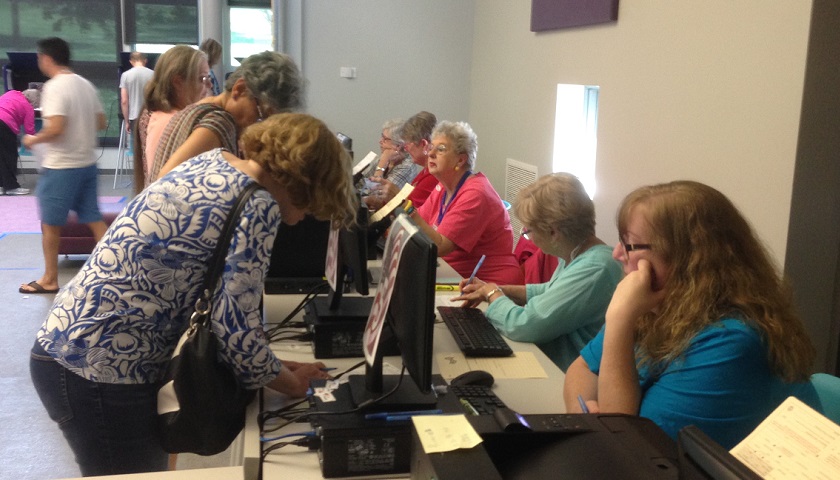by Evie Fordham
RealClearPolitics data is pointing to a red wave in the Senate this November, with recent polls showing key seats like North Dakota and Arizona going or staying red.
RealClear currently predicts that at least 49 Senate seats will be Republican and at least 44 will be Democrats, with seven toss-up races. In three of those toss-ups, recent polls contain good news for Republican candidates. If Republicans do win in the four toss-up races where they have the best chances — Arizona, Tennessee, Nevada and Missouri — the Senate could see a net gain of up to two senators, from 51 to 53.
 In Arizona’s so-called “toss-up” race, Republican candidate Martha McSally has a 6-point lead on Democrat Kyrsten Sinema in the most recent poll from early October.
In Arizona’s so-called “toss-up” race, Republican candidate Martha McSally has a 6-point lead on Democrat Kyrsten Sinema in the most recent poll from early October.
Two of the most recent Tennessee Senate race polls cited by RealClear show Republican Rep. Marsha Blackburn up by five and eight points compared to Democratic former Gov. Phil Bredesen.
Other toss-up races in Nevada and Missouri show slimmer margins for Republicans. Republican incumbent Sen. Dean Heller is up by two points, which is within the margin of error, on Democratic challenger Jacky Rosen, according to numbers from late September and early October. In Missouri, Republican challenger Josh Hawley has a narrow 0.4 lead on Democratic incumbent Sen. Claire McCaskill, according to RealClear.
Republicans will likely pick up a seat in North Dakota, where Republican challenger Kevin Cramer has as much as a 12-point lead on Democratic incumbent Sen. Heidi Heitkamp, according to polls from late September and early October.
RealClear most recently changed its ranking for the Texas Senate race between Republican incumbent Sen. Ted Cruz and his Democratic challenger, Rep. Beto O’Rourke, from “Toss Up” to “Leans GOP” Monday.
FiveThirtyEight highlighted Republicans’ improved Senate chances Tuesday.
“Republicans’ chances of keeping the Senate are up to about a 4 in 5 … Republicans have always been favored to hold the Senate, but that’s nevertheless a meaningful improvement from recent weeks, when their odds were generally hovering between 2 in 3 (67 percent) and 7 in 10 (70 percent) instead,” predicted FiveThirtyEight.
– – –
Evie Fordham is a reporter for the Daily Caller News Foundation. Follow Evie on Twitter @eviefordham.




